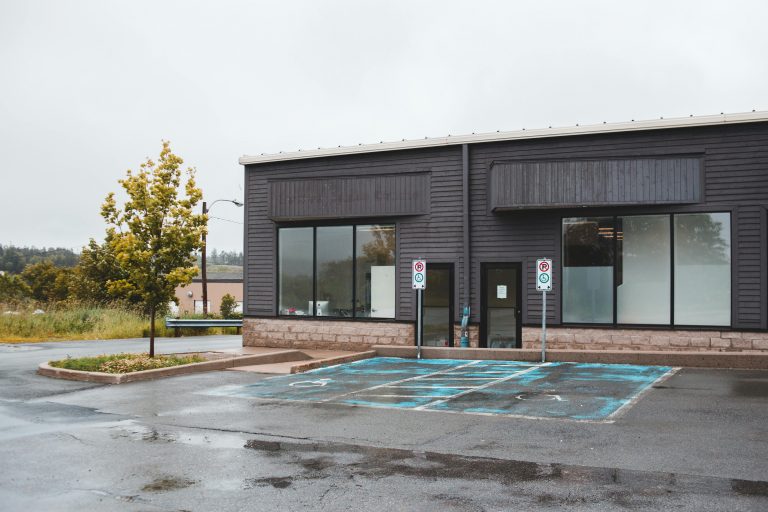Disclaimer: Benro Properties. This site provides home improvement content for informational purposes only.
Highlights
- Regular inspections and cleaning prevent minor cracks from worsening.
- Sealcoating every 2–3 years protects asphalt from sun, water, and chemicals.
- Proper drainage and edge care reduce erosion and water-related damage.
- Addressing minor cracks and potholes promptly avoids costly repairs.
- Seasonal preparation—spring, summer, fall, and winter—is essential for longevity.
- Professional help from licensed asphalt contractors that are licensed and insured can extend the life of your driveway or parking area.

Maintaining asphalt surfaces requires more than just periodic patching. From driveways to parking lots, asphalt is vulnerable to weather conditions, heavy vehicle use, and chemical exposure. Cracks and potholes may start small, but over time, they can compromise both the appearance and functionality of your pavement. Preventive seasonal maintenance is key to protecting your investment.
By understanding how winter frost, spring rains, summer heat, and fall debris affect asphalt, property owners can take proactive measures to maintain smooth, durable surfaces. In this guide, we’ll provide comprehensive tips for year-round care, highlighting practical actions and long-term strategies to prevent cracks and potholes.
Understanding Asphalt Damage
Before diving into seasonal maintenance, it’s essential to recognize how asphalt deteriorates:
Common Types of Damage
- Cracks: Small surface cracks may appear due to temperature changes, heavy loads, or minor settling. If left untreated, they can expand and allow water infiltration.
- Potholes: Often result from water seeping into cracks, freezing, and expanding. Vehicles driving over weakened areas accelerate deterioration.
- Fading and Oxidation: UV rays gradually break down asphalt binders, causing color loss and brittleness.
- Rutting: Repeated heavy traffic can form depressions in the asphalt surface.
Why Early Detection Matters
- Prevents small issues from becoming costly repairs.
- Maintains smooth surfaces for safety and aesthetics.
- Sealcoating vs. Resurfacing, reducing long-term expenses.
Spring Maintenance Tips
Spring is a critical time to recover from the stress winter has placed on your asphalt and prepare it for the warmer months ahead. Proper care during this season can prevent minor issues from developing into costly repairs.
Inspection After Winter
- Examine the surface for frost heaves, cracks, and areas where water tends to pool. Freezing and thawing cycles can cause small imperfections to worsen if left unchecked.
- Check for damage caused by snow plows, ice-melting chemicals, and heavy winter traffic. These factors can erode the surface and lead to early deterioration.
Cleaning and Debris Removal
- Sweep away leaves, sand, salt, and other winter debris to prevent abrasion and staining of the asphalt. Regular cleaning removes elements that can accelerate wear and tear.
- For stubborn dirt, algae, or mildew buildup, use a pressure washer with moderate settings to clean thoroughly without damaging the asphalt surface. A clean driveway also improves safety by reducing slippery areas.
Crack Filling and Minor Repairs
- Address small cracks promptly using cold or hot pour crack fillers. Sealing cracks prevents water infiltration, which could otherwise cause further expansion during freeze-thaw cycles.
- Patch minor potholes to stop them from growing. Early intervention is far less costly than full-scale repairs and keeps your driveway safe and functional.
Sealcoating Preparation
- Remove oil, grease, and other stains before applying a sealcoat. Contaminants can prevent proper adhesion, reducing the effectiveness of the protective layer.
- Sealcoating strengthens the asphalt surface, shields it from harmful UV rays, enhances appearance, and extends its lifespan. It’s an essential step to protect your investment.
Pro Tip: Spring is also an ideal time to schedule professional inspections. A licensed asphalt contractor can identify hidden damage that may not be obvious to the untrained eye, ensuring your driveway is ready for the season and minimizing future repair costs.
Summer Maintenance Tips
Summer brings heat and heavy sun exposure, which can accelerate asphalt wear.
Heat and Sun Protection
- Apply a fresh sealcoat every 2–3 years to prevent UV damage.
- Avoid heavy vehicle traffic on newly paved or sealcoated areas for at least 24–48 hours.
Routine Cleaning
- Remove oil drips, dirt, and sand that can degrade asphalt.
- Clean up spills promptly with absorbent materials or commercial cleaners.
Edge Maintenance
- Check edges for crumbling or erosion.
- Reinforce vulnerable areas with additional asphalt or edging material.
Monitor for Soft Spots
- High temperatures can soften asphalt temporarily. Avoid heavy loads in these areas.
Pro Tip: Summer is ideal for resurfacing or minor overlays, as warm temperatures improve material adhesion and curing.
Fall Maintenance Tips
Fall is an important time to prepare your asphalt for the harsh winter months ahead. Taking proactive steps now helps prevent costly damage and extends the life of your driveway or pavement.
Leaf and Debris Management
- Remove fallen leaves, sticks, and other organic matter from your asphalt. Organic debris can trap moisture, leading to mold, algae, and accelerated surface deterioration.
- Keep the surface clear throughout the season, especially after storms, to reduce slipping hazards and prevent moisture from seeping into cracks.
Drainage Checks
- Ensure gutters, downspouts, and surrounding slopes are directing water away from your asphalt. Proper drainage reduces water infiltration that can cause cracking and potholes during freeze-thaw cycles.
- Clear any blocked drains or culverts to prevent puddling on your surface, which can weaken the asphalt over time.
Pre-Winter Crack Sealing
- Fill existing cracks before the first freeze. Water that penetrates untreated cracks can freeze, expand, and worsen damage, leading to larger repairs in spring.
- Use quality cold or hot pour crack fillers for durable protection, and consider professional sealing for larger or widespread cracks.
Surface Inspection
- Examine your asphalt for areas that may require patching, resurfacing, or edge reinforcement. Fall is the ideal time to address these issues while the weather is still mild.
- Look for low spots, fading, or early signs of structural wear that could be worsened by snow, ice, and heavy winter traffic.
Pro Tip: Schedule any professional repairs in fall to avoid emergency work in harsh winter conditions. Engaging an experienced contractor ensures your asphalt is properly maintained and ready to withstand winter challenges.
Winter Maintenance Tips

Winter is the most challenging season for asphalt surfaces due to freezing temperatures and snow accumulation.
Snow and Ice Management
- Use proper shoveling techniques to avoid scraping the asphalt.
- Apply non-corrosive de-icers to protect the surface.
Avoid Heavy Vehicles
- Limit heavy traffic during freeze-thaw cycles to reduce cracking.
Prevent Freeze-Thaw Damage
- Address water pooling immediately. Ice expansion in cracks is a primary cause of potholes.
Emergency Repairs
- Temporary asphalt patching can prevent damage from worsening until professional repair is possible.
Pro Tip: Keep a supply of sand or cat litter for traction instead of salts that can degrade asphalt binders.
Tools and Materials for Year-Round Maintenance
Proper tools and products make asphalt maintenance more effective and extend surface longevity.
Recommended Materials
- Asphalt sealers for UV and water protection.
- Crack fillers: cold pour for small cracks, hot pour for deep fissures.
- Asphalt patching compounds for potholes.
Essential Tools
- Push brooms and leaf blowers for debris removal.
- Pressure washers for deep cleaning.
- Shovels, tampers, and compaction tools for repairs.
Tips for Use
- Follow manufacturer instructions for sealers and fillers.
- Ensure surface is dry and clean before application.
- Wear protective gear when handling chemicals or heated materials.
When to Call Professionals
While DIY maintenance is essential, some situations require expert help:
Signs You Need Professionals
- Large or numerous cracks.
- Extensive potholes.
- Areas with drainage problems or subsurface issues.
Benefits of Professional Services
- Licensed asphalt contractors that are licensed and insured can assess structural damage.
- Professionals use high-quality materials and equipment for long-lasting repairs.
- Timely interventions prevent major replacements and save money in the long term.
Pro Tip: Regularly schedule professional inspections at least once a year to catch hidden issues early.
Tips for Extending Asphalt Lifespan
- Routine Inspections: Check for cracks, soft spots, and edge deterioration quarterly.
- Consistent Maintenance: Clean, sealcoat, and patch as needed.
- Avoid Harsh Chemicals: Limit exposure to oils, gasoline, and salts.
- Proper Drainage: Ensure water does not pool on the surface.
- Limit Heavy Traffic: Rotate parking areas and avoid stationary heavy loads.
By following these best practices, you can maximize your asphalt’s lifespan while minimizing costly repairs.
Conclusion
Seasonal maintenance is the cornerstone of a durable and attractive asphalt surface. From spring inspections to winter precautions, proactive care prevents cracks, potholes, and long-term damage. Regular cleaning, timely crack filling, proper sealcoating, and professional assistance from asphalt contractors that are licensed and insured ensure your driveway, parking lot, or pathway remains smooth and functional year-round. Consistent care not only saves money but also maintains the safety and aesthetics of your property.
